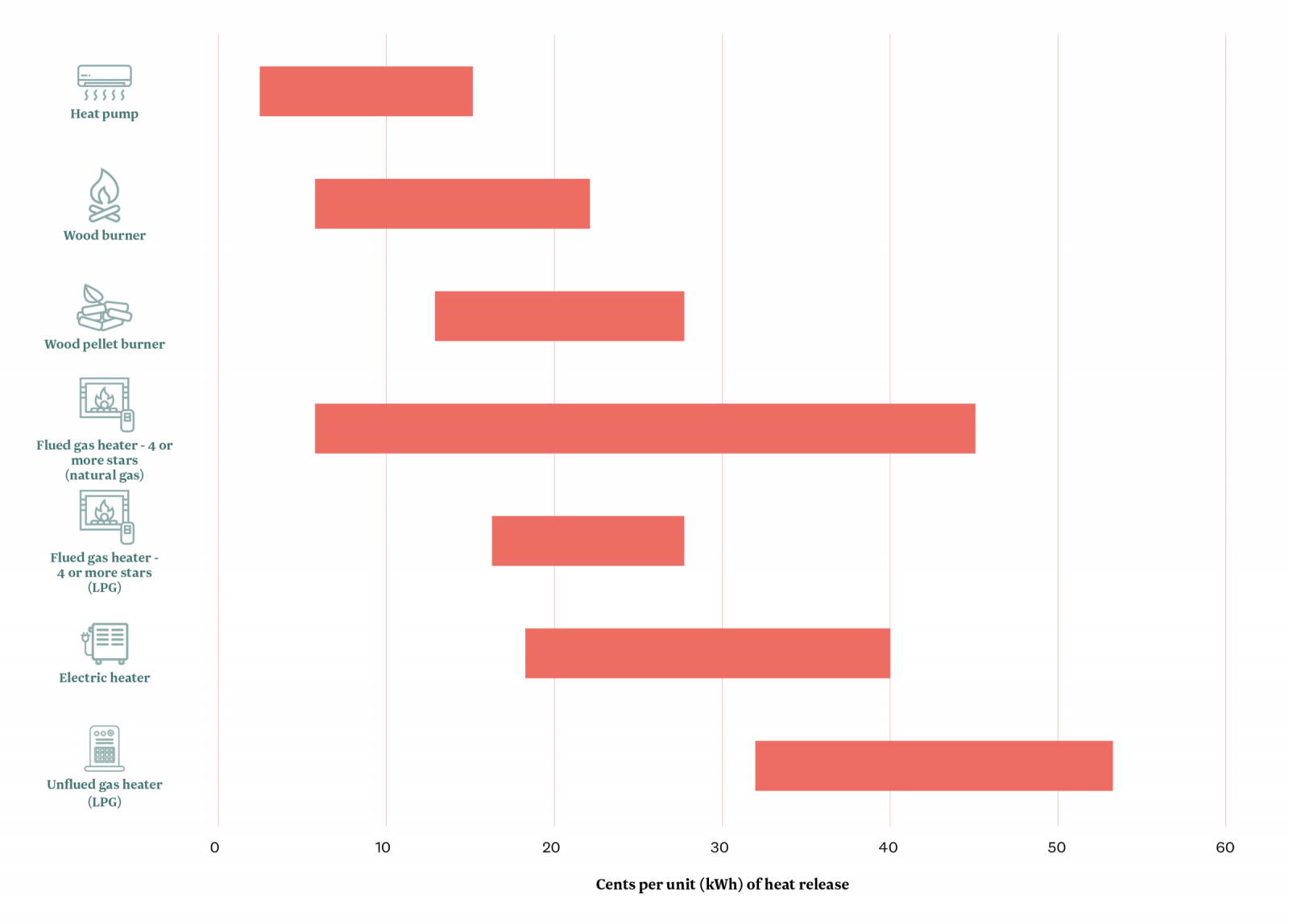Heat to a healthy temperature
According to the World Health Organisation, 18°C is a healthy temperature for any room being used – higher for children, the elderly and people who are ill.
Gen Less heating checklist
- Insulate first — keep the heat where you need it.
- Choose a heater that uses renewable energy, like wood, wood pellets or electricity (which is about 80% renewable).
- Choose the most efficient model for the job.
- Get advice from an expert on the best size and functionality for you.
- Choose the right-sized heater for the room — too small and it’ll struggle, too big and you’ll pay more. Tenancy Services Heating Assessment Tool(external link)
- Use and maintain your heater as recommended by the manufacturer.
- Hold onto your heat — shut doors and curtains, and block drafts.
Choose the right heater for your room
A really good heater in the room you use most makes a world of difference to health and comfort. A smaller, cheaper one is fine for rooms you use less, like a bedroom or study.
Factor in:
- Price — a fixed, efficient heater might cost more but do a better job.
- Running costs — cheaper heaters can be more expensive to run.
- Output — make sure it's the right size to heat the room.
Get the best type of heater
Find out the pros and cons of different heaters.
What to steer clear of
Unflued gas heaters, also known as cabinet heaters, tend to be the most expensive type of heating and release toxic fumes and moisture into your house.
-
Grants to buy a new heater
Warmer Kiwi Homes is a Government programme offering insulation and heater grants to low income homeowners. Use the Warmer Kiwi Homes tool to find out if your home is eligible for a grant. -
Need some healthy home advice?
Get guidance to assess how warm, safe and dry your home is, and discover what you can do to improve it. You can do a healthy home check yourself online, or a certified advisor can visit and assess your home, and tailor an improvement plan. Many offer their services free of charge.
Heater running costs vary a lot
This chart shows how much it costs to get the same amount of warmth from different heaters. The cheapest to run are highly efficient, use the cheapest fuel and have no fixed charges.

Cool your home efficiently
Climate-friendly ways to stay chill when the temperatures rise.
-
1
Easy fixes
Keep out the sun by shutting curtains and blinds. Open doors and windows in different rooms to move air through your home. Fit security latches to leave windows open while you’re out.
-
2
Create shade outside your home
Plant deciduous trees to shade your house in summer. They’ll let sun through when they lose their leaves in winter. Install external window shades - such as blinds, awnings or louvres. Eaves or roof overhangs above north-facing windows block summer sun.
-
3
Use fans
Table-top, floor and ceiling fans use a lot less energy than air conditioning. If you have a heat pump, try the fan-only setting with your windows open.
If you're desperate for air con
- Try the dehumidifying mode — it uses less energy than full conditioning.
- Cool one room — it's what most are made to do.
- Shut doors and windows.
- Set the thermostat to around 24ºC — a lower setting won't make it work faster.
- Don't use 'auto' as it may switch to heating.
- Clean the filter with a vacuum cleaner or warm water every couple of weeks.
